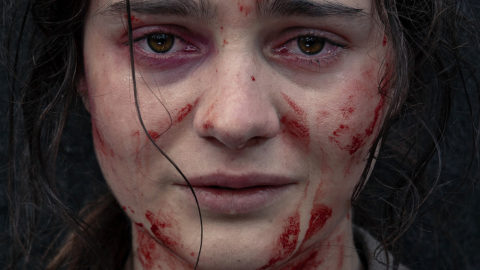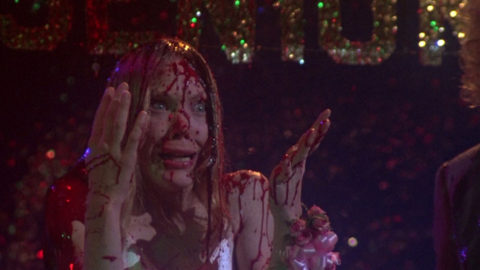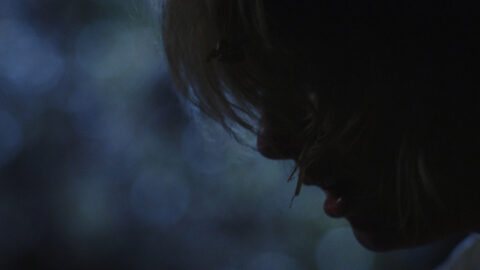Classified: The Witch Who Came from the Sea
This article inaugurates a regular series of contributions on genre by April Wolfe.
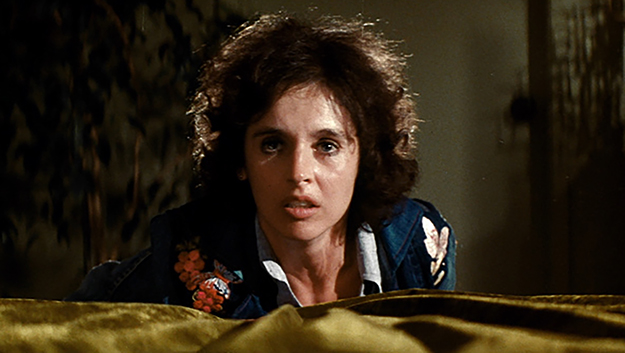
Matt Cimber’s The Witch Who Came from the Sea (1976) is distinctly American horror, not just in its content but in how it came to be—born from desperation. Writer Robert Thom drafted the script in a manic haze from his hospital bed, an IV drip needled into his vein. Thom had grown very ill, and his then-wife, actor Millie Perkins, was struggling to pay his hospital bills. They were destitute and stressed, and the only thing Thom could do was write. So he conjured a story, half-torn from Perkins’ own childhood with a doting sailor father and half from his own fraught childhood, with a pinch of psychological horror tropes to spice it up. Whatever would sell it; they needed the money for healthcare.
Perkins agreed to star in the film for a fee that would go to her husband’s hospital bills, but the script and the story—about a disturbed woman reeling from sexual abuse, who seduces then castrates men—embarrassed her. Perkins’ sister even chastised her for allowing a script that could sully their father’s honor to be written. And because Perkins would be required to get nude and act in sex scenes, she was so ashamed that she told no one else about it. “I didn’t want anyone to know I did a softcore movie,” she said. “That’s what I called it then.” The Witch Who Came from the Sea was so far from where Perkins had started.
She’d made her critically lauded screen debut in George Stevens’ The Diary of Anne Frank (1959) and from that performance was destined to be a star, but the independent actress had come to the Hollywood seemingly a few years too early, when the studio system was still chaining their starlets to projects without consent. Ironically, the studios dropped her after she’d turned down a role in what she’d called a “B movie,” and a decade later she finally had to swallow her pride to make Witch. The whole process of filming became deeply humiliating for her. Aside from the money, the only reason she stayed was because Cimber and crew put her on a pedestal; Perkins was what Cimber and cinematographer Dean Cundey called a “real actress,” rare for exploitation pictures.
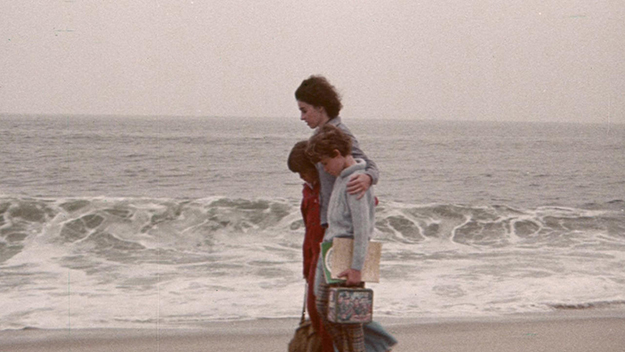
Despite the sensationalist premise of the film, there remains a certain class and sophistication to its execution, buoyed by Perkins’ performance, which treats the material as highbrow Greek tragedy, rather than lurid exploitation. As Molly, an enigmatic barmaid who often plays cool aunt to two nephews, Perkins exudes a curious combination of fragility and strength. She oscillates from childlike naïf to a razor-wielding murderess—there is more than a little of Lady Macbeth in the latter turns. Perkins’ performance balances on a knife’s blade, and part of the thrill of watching her, here, is in wondering which side Molly will fall on in any one scene, not unlike Anthony Perkins’ work in Psycho. Both characters display a broken innocence, so that one may abhor their acts, even as one wishes to protect them. As Cimber stated in pre-production: “If [Perkins] could maintain that warmth as a person and slaughter people, I have a film.”
If it were simply Perkins out there on her own, the film would have been complete enough, but even minor players in the cast step up to their lead’s levels. Character actor Lonny Chapin, who’d been a staple on TV dramas and worked with Alfred Hitchcock multiple times, brought a quiet gravitas to his character Long John, a barman in a seaman’s cap whose gentle voice and compassion ground the story. And then there’s Peggy Feury, who was coaxed out of retirement to play a bit part as Doris, a judgy, chatty-Cathy waitress and coworker of Molly’s. Feury had been and was still a prominent teacher and art director at the Actors’ Studio, instructing actors such as Michelle Pfeiffer, Anjelica Huston, and Sean Penn. She was coaching most of the major actors in Hollywood at that time and turned down the role repeatedly until it became easier to say yes to Cimber than to keep hanging up the phone. Every dry, acerbic line Feury delivers as Doris cuts deeply. She acts simultaneously as comic relief, Greek chorus, and little devil on Molly’s shoulder.
Cimber, who’d built his career on outsider exploitation pictures and who would later go on to found G.L.O.W., benefitted from a charismatic personality that seemed to sweep talented collaborators into his orbit. One of those was Cundey, then a young go-getter who came to Cimber with the promise of a hookup for anamorphic lenses. The wide-angle lenses allowed Cundey to set up long shots, tracking and panning throughout, which kept Cimber on budget—fewer setups—and created the fluid, dreamlike visual style of the film. The pacing is often so pleasantly slow that the horror of what Molly will do isn’t immediately apparent until it’s actually happening. And even then, the camera stays steady, as though we are in sleep paralysis, simply floating around her and unable to awake from the dream.

Before Witch, Cundey had only a few features under his belt, but he’d also shown a willingness to venture into the experimental and abstract, particularly with the low-budget horror film So Evil, My Sister, which featured camerawork that strove to put the audience into characters’ fractured and warped points of view. Here, he uses selective slow-motion and techniques like color-negative film for mystical vignettes, where we see Molly on a raft, being swept to sea. It’s difficult not to overstate what Cundey learned as a young cinematographer, shooting this low-budget exploitation pic, but two years after completing Witch, Cundey was shooting Halloween (1978) and using the same atmospheric long shots. Flash forward even further, and he’s working with John Carpenter and Steven Spielberg on some of the most advanced, experimental special and visual effects that had ever been created.
The Witch Who Came from the Sea, for all its shock value and murders, is probably one of the more sensitive portrayals of mental illness and PTSD and possibly bipolar disorder in a horror film of the time, in that the character’s full history and personality is on display. Molly is not simply a one-dimensional killer; she’s a complex human whose close friends and family write off her quirkiness, rather than seek help for her. But she is beloved and at times fiercely caring and maternal. And there’s a fair bit of truth in how she idealizes the father who molests her, rewriting her own history as a coping mechanism until the truth catches up with her, and she is overcome by rage. The only unrealistic part is the resultant murder and mutilation.
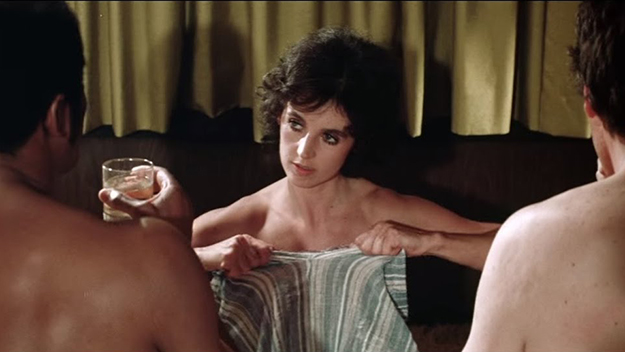
That The Witch Who Came from the Sea failed to find its audience upon release has much to do with its rating and marketing. Cimber battled it out with the ratings board. He said the women there were vehemently resistant to the suggestion of childhood sexual abuse depicted in the film, even though nothing is actually seen in the film. He said one woman angrily said, “Whatever gave you the idea that you could put this on film?” He was genuinely confused, finding this film to be one that actually had artistic merit and something to say, but chalked up the reaction to “a purity holdover.” He said, “Nobody back then ever dealt with [trauma]. These subjects never belong in movies. Movies are entertainment.”
Unfortunately, marketing a horror movie that was primarily a serious character drama proved difficult at the time. Some theaters in the South began showing their own cuts of the film, slimming down the drama to get to the blood and terror. Even then, they had difficulty drawing a crowd until Cimber released a new, and misleading, poster, featuring a buxom warrior-witch straddling a craggy rock, a scythe in one hand and a bloody, severed head in the other. This was the epitome of false advertising and may have helped a bit with the box office but not with the reviews.
Today, The Witch Who Came from the Sea has gained more positive reactions, putting it in the discussion of other lauded hysterical-woman art films, like Repulsion, Possession, and The Brood, which are themselves finding critical re-examination as directors like Jennifer Kent (The Babadook), Julia Ducournau (Raw), and Sophia Takal (Always Shine) re-invent the genre. Witch, however, still stands apart as an original, a mind-bending descent into madness with all the empathy that could ever be mustered for the trip.
April Wolfe is formerly lead critic for LA Weekly. She currently hosts the Switchblade Sisters podcast, and has written for the Village Voice, AV Club, the Washington Post, and The Wrap.



